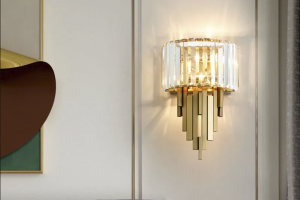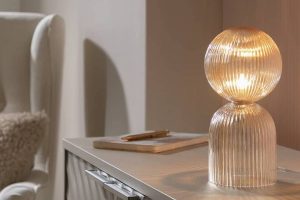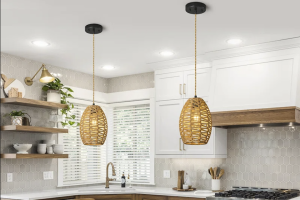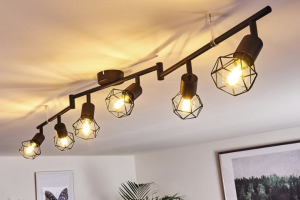The History of Hanging Lamps
For centuries, hanging lamps have been a staple in interior design. In medieval times, chandeliers were used to light up banquet halls and were a symbol of luxury and wealth. In the 18th century, the use of hanging lamps became more widespread, with new materials such as crystal and glass being used to create even more elaborate designs.
The Design and Function of Hanging Lamps
Hanging lamps come in a wide range of styles and designs, from classic chandeliers to modern pendant lights. The design often depends on the function of the lamp and the space it will be used in. In dining rooms, for example, chandeliers are often the go-to option, while pendant lights work well in kitchens and living rooms.
In addition to their aesthetic appeal, hanging lamps also serve an important functional purpose. They provide ambient lighting, task lighting, and accent lighting, depending on their placement and design.
Ambient Lighting
Ambient lighting refers to general, overall illumination in a space. Hanging lamps, especially chandeliers, can provide ample ambient lighting. By casting light upwards towards the ceiling, they can create a warm and inviting atmosphere in any room.
Task Lighting
Task lighting, on the other hand, is focused lighting that is used for specific tasks, such as reading or cooking. Pendant lights are great for providing task lighting because they can be placed directly above a work surface, casting a concentrated beam of light where it is needed most.
Accent Lighting
Accent lighting is used to highlight specific objects or areas in a room. Hanging lamps, such as wall sconces or pendants with adjustable arms, can be used to provide accent lighting. They can be directed towards artwork, architectural features, or other decorative elements to create a dramatic effect.
Choosing the Right Hanging Lamp
Choosing the right hanging lamp can be overwhelming, given the wide range of styles and designs available. However, there are a few key factors to consider when making a decision:
Size and Scale
The size and scale of the lamp should be proportional to the size of the room and the height of the ceiling. A large, elaborate chandelier might look impressive in a grand ballroom but can overwhelm a smaller space.
Style and Design
The style and design of the lamp should complement the decor of the room. A modern pendant light might not work well in a traditional setting, while a classic crystal chandelier might not fit in a minimalist space.
Placement
The placement of the lamp is also important. A chandelier in a dining room should be hung low enough to create a warm and inviting atmosphere but high enough to avoid obstructing views. Pendant lights in a kitchen, on the other hand, should be hung low enough to provide task lighting but high enough to avoid hitting one’s head.
The Future of Hanging Lamps
As technology advances, hanging lamp designs are becoming more innovative and sustainable. LED lighting, for example, is a popular option for hanging lamps because it is energy-efficient and long-lasting. Smart lighting systems, which allow lamps to be controlled through a mobile app or voice command, are also gaining in popularity.
Despite these advancements, the appeal of hanging lamps lies in their timeless elegance and beauty. As long as there are homes to decorate and rooms to illuminate, hanging lamps will continue to be an important and beloved feature of interior design.
Conclusion
Hanging lamps have a rich history and continue to be a valuable addition to any space. With their combination of form and function, they provide ambient lighting, task lighting, and accent lighting while also adding a touch of elegance and sophistication. When choosing a hanging lamp, it’s important to consider size, style, and placement, but above all, it’s important to choose a lamp that speaks to your personal sense of style and enhances the beauty of your home.




More Posts
Stunning Vintage Opaline Lights: Illuminating Homes with Timeless Elegance
Bringing Versatility to Light: Exploring the Benefits of Dual Light Technology
Shining Light on E14 Bulbs: The Ultimate Guide to Understanding and Using Them